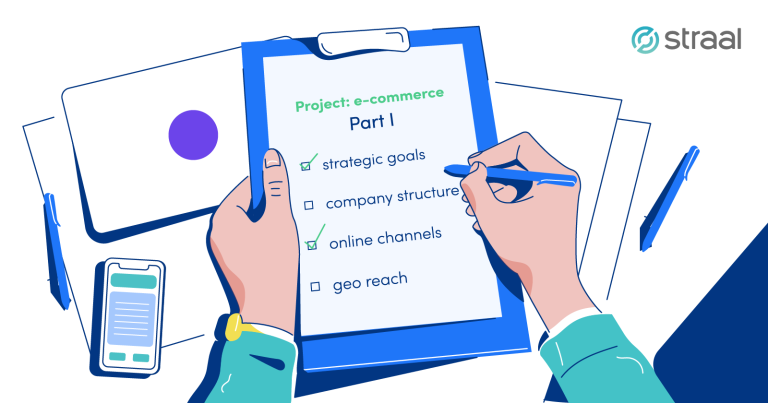Simplicity of User Experience, efficient billing model and a well-thought risk management strategy. These are the keys to unlock your business potential on the ever more competitive market of digital services, as uncovered by e-commerce professionals at the very first edition of Warsaw Ecommerce Tech Sessions (WETS) – a new series of meetups powered by Straal and Business Link.

Digital economy is on the way to hitting $23 trillion by 2025. Unsurprisingly, everybody wants a piece of that lucrative cake, so running a profitable online business is becoming an increasingly competitive mission. Hence, the question is – how to differentiate your company from competitors? How to stand out? Of course, a ground-breaking business idea is one thing. But the devil is in the execution and the suite of technologies that powers your product and digital storefront in these regards matters more than ever. So where to get the know-how necessary to succeed? Ideally first-hand – from experienced professionals during meetups like the recently kicked off Warsaw Ecommerce Tech Sessions.
Let’s dive into the practical advice and unique business insights the attendees could learn throughout the first event.
Simplicity is the new black, simplify everything
As the modern internet is oversaturated with shopping options, the primary reason for most customers to spend their money at your website or in your app, rather than elsewhere, is simplicity. Easy navigation and checkout are often listed among the top 10 factors that influence online sales. For instance, reducing payment to just one click can have a major impact on your conversion rate and revenue. As the audience could have learned during the opening speech, introducing one-click transactions to the gaming players can trigger even a 25% growth in profits. That is, among others, because 1/3 of shoppers abandon their carts due to ’too long or complicated checkout process’. If you want to keep up with the rising customer expectations, you must provide a truly seamless, barely noticeable payment experience.
But it goes beyond the checkout. If you want to let your clients pay with just one click, make sure your entire interface is as simple as the checkout. Without a smooth, simple and intuitive customer path from the welcome screen right to the purchase, there’s no point in going one-click – said Marcin Krzemień, CEO of Rocket Luncher – during his keynote on things to mind while introducing one-click payments. Application of this philosophy in Rocket Luncher made it possible for this Warsaw-based food delivery startup to offer its users a 15-second ordering process, including the payment, which makes it probably one of the fastest food delivery apps on the market. But there’s no rose without a thorn.

As profitable as it is, simplifying the user experience does not come without its challenges. One-click payments are convenient, but require users to save their credentials in the system (card on file). This presents an opportunity for fraudsters. Kamil Klepacki, Co-founder of Blinkee.city – a rapidly-growing network of shared electric scooters – explained that for this particular reason his company does not store any credit card details in-house. It would either cost a fortune to ensure credentials’ safety or leave an open door for a cyber-attack – said Mr Klepacki during his case study of a physical service with digital UI. Later he advised to opt for cooperation with a certified provider of payment solutions (Straal, for instance, holds a Level 1 PCI DSS compliance certificate) and consequently outsource the responsibility of keeping sensitive data safe.
Boost effectiveness with post-paid
So now that you have improved the user experience, another question is how to charge the users? Upfront or after the service is delivered? Kamil Klepacki presented a case study right from the frontline of his company’s European market expansion. The scooter sharing system developed by Blinkee.city has just recently switched to post-paid billing. During his keynote, Kamil unveiled the 3 main benefits of the recent changes: From the company’s perspective, post-paid brings us transparency of the settlement model, full control over the service’s monetization and increased customer satisfaction. Most notably, moving to post-service billing removed the friction for first-time users, and allowed the company to expand.
From the customer’s perspective, removing the requirement to pre-pay for the service, saves the money they would otherwise lock by not using the entire balance. Furthermore, implementation of the post-paid model allows for a more spontaneous, faster use of the service, dropping the lengthy sign-up processes and account top-ups. From the very beginning of Blinkee, our goal has been to let people use our scooters spontaneously. Imagine a sunny day, when you just mosey down the street and suddenly come across a scooter. So, you just download the app and rent it in just a few taps – said Blinkee.city’s Co-founder, explaining the decision to change the billing method.

Of course, there are certain limitations that you have to keep in mind when implementing post-paid billing for your service. First of all, remember that you will probably have to ask your users for card details, so – for security reasons – make sure this data is tokenized and stored securely by an external, certified entity. And what if the card penetration is low in your target market? Try implementing a local payment method or a cash alternative. Although it isn’t as convenient as an in-app payment, nearly 70% of our rides are paid in cash. Mostly in Africa, where less than 10% of the population has a debit or credit card – said Alex Kartsel, Country Manager at Taxify – a unicorn ride-hailing app, sometimes called 'the Uber of the developing world’.
Finally, in the post-paid model, you cannot afford to have a high ratio of failed payments, as the services or goods have already been delivered. You can minimise the risk of transaction denial by choosing a payment solution provider who offers extensive optimisation features. Some failed payments, however, are a result of fraud. For those, you will need a well thought anti-fraud strategy.
Invest in your anti-fraud strategy
Regardless of whether your company relies on pre- or post-paid billing, every online business is exposed to the threat of fraud. In the most severe cases, the scale of fraud can overpower the legitimate profits your company makes. 1 out of 100 Taxify’s in-app rides is reported as fraud. What’s even more terrifying is that some of these exploits are single-handedly worth more than a dozen valid rides – said Alex Kartsel from Taxify in his keynote on Automatic Payments & Business Efficiency. Later he went on to describe the broad spectrum of fraud that his company faces – identity theft, deliberately failed payments, bonus/promotion exploit, resell, or money laundering just to name a few – he added. Marcin Krzemień, in turn, shared that despite the anti-fraud mechanisms, approximately 10% of his users have attempted to bypass the terms and conditions of the Rocket Luncher’s promotions.
As you can see, the scale of online fraud is enormous. How to maintain profitability in the world where fraudsters can choose from a plethora of options to cheat? The thing is to mitigate the fraud losses without constraining your loyal customers.

For instance, when it comes to friendly fraud, such as the creation of new accounts for promo code eligibility, Blinkee.city’s Co-founder suggests a two-factor account authentication. We have been testing multiple ways to control the bonus exploits without overly limiting our legitimate users and have reached a conclusion that introducing an additional step when signing up to Blinkee will strike the right balance – said Kamil Klepacki. Later Marcin Krzemień pointed out that efforts to scale down the losses are necessary, but a part of the 'bonus’ frauds is just the extended cost of acquiring new users. Eventually, some of them will switch into your regular, paying customers. Of course, this approach is more acceptable when selling a 5-dollar lunch box rather than rides worth $10+. This shows how important it is to adjust your risk management strategy and fraud prevention policy to the specific conditions of your business and industry.
However, bear in mind that a large part of system exploits goes way beyond taking advantage of promotional codes. When fighting money laundering or identity theft it is better to turn to sophisticated user profiling tools and machine learning models, rather than setting strict, static anti-fraud rules. Sure, rigorous sets of rules increase the rate of prevented frauds, but that’s at the cost of many healthy transactions. After all, your business goal is to eliminate fraudulent transactions with as few false positives (erroneous detections) as possible.
During the closing Q&A session, Alex Kartsel revealed that Taxify is spending significant resources on perfecting its in-house algorithmic fraud detection mechanisms. We have a sizeable security department that takes care of it and they get more accurate every day. If your company is worth $1 billion, chances are you can afford an in-house team of data scientists working on dedicated state-of-the-art tools. But isn’t there a more cost-efficient option? Yes, there is! Another way to boost the fraud prevention accuracy is to turn to a payment solution provider who offers AI-based detection of fraud attempts as a part of their service. You can read more about gearing up for the increasingly real threat of payment fraud in our recent blog post.
Missed it? Next session is coming!

Would you like to meet more interesting speakers, make unique business connections and get first-hand technical insights from the people who run successful e-commerce companies? Join our next WETS meetup on December 5th 2018! More information about the location and speakers will be revealed soon. You will be able to track updates about the upcoming edition of WETS on Straal’s social media channels: Facebook, Twitter and LinkedIn. Follow us to stay tuned.







